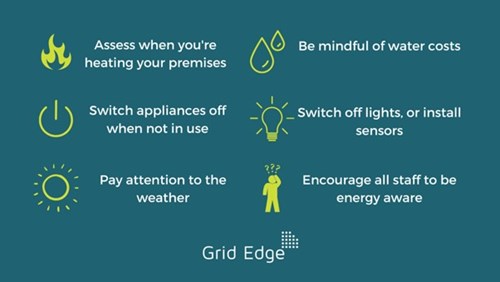Making sense of skyrocketing energy prices

By now, you may already be aware that recent events have resulted in a dramatic increase in wholesale electricity prices.
In these uncertain times, for both businesses and homes, it can be hard to know what it all means; what has caused it; and what you can do to soften the blow. Read on as we make sense of it all, and explain why reaching for Net Zero may be the key to your organisation surviving the squeeze.
What is happening?
To strip it back to the basics: wholesale electricity prices have been rising rapidly across the world, and for a number of reasons (which we will go through shortly).
To put the scale of inflation into context, prices have risen up to 12 times what they were this time last year and have risen by 33 per cent when compared to just six months prior. It is highly likely that this volatility will continue. All of this, in-turn, has resulted in a record increase in global gas prices and forced the energy price cap up by an eye-watering 54 per cent.
Though it may seem that the price cap will only impact things on a domestic-level; there will certainly be a knock-on effect for businesses so it's better to be prepared.
For many, this may seem like quite a sudden increase and, with many big news stories taking a hold of mainstream news and media, it can also be hard to pinpoint the causes. We can take a moment to go through a few now, before we think about how we can adapt to these changes and how Grid Edge can help businesses.
The BBC has identified that a colder winter throughout Europe (both in 2020 and 2021), has raised demand, put pressure on suppliers, and reduced the amount of gas stored. In the UK, since the closing of a gas facility in 2017, we have lost up to 70 per cent of our energy storage capabilities, leading to supply being more thinly spread.
As well as this, the summer of 2021 was relatively wind-less, meaning that wind-produced energy was also in limited supply. There was also an increased demand in liquified natural gas (LNG), which is most commonly used throughout Asia. Thus, the rise in gas and energy prices is the product of all of these factors occurring simultaneously, along with the impact of Russia's footing in the energy market.
Surviving the Squeeze
These dramatic increases in wholesale energy, needn't mean your energy bills also increase (at least, not as dramatically). Now is the perfect opportunity to turn your attention to your Net Zero and sustainability commitments. After all: the greenest and cheapest kWh is the one you don't have to use!
What's more, with the built environment accounting for 40 per cent of global emissions, making changes to how we use energy (commercially and on a personal level) has a monumental impact on the planet and the energy market.
There is nothing like a win-win situation in which you can save money and help the planet. Below are some small changes you can make that'll help you reach net zero goals, and use your energy in a more cost efficient way.

How can Grid Edge help?
We hope that you've found this blog useful to understand what is happening with energy prices; what the main causes are; and how you can keep your energy prices low. Of course, making changes to our energy strategies is always easier said than done. Identifying the problem areas in your energy usage, whilst simultaneously managing a building (or a portfolio), can be overwhelming.
It is for exactly this reason that Grid Edge was created: to empower organisations to be more sustainable and to help cut costs & carbon on the Net Zero journey. Grid Edge contextualises all of your relevant data and uses AI to create data-driven insights, helping you to reduce energy demand with efficiency savings and improved operations and control.
Our platform could be the key to cutting your organisations energy costs and carbon usage by up to 20 per cent. To learn more about the platform, or to see it in action speak to one of the team by clicking here.
